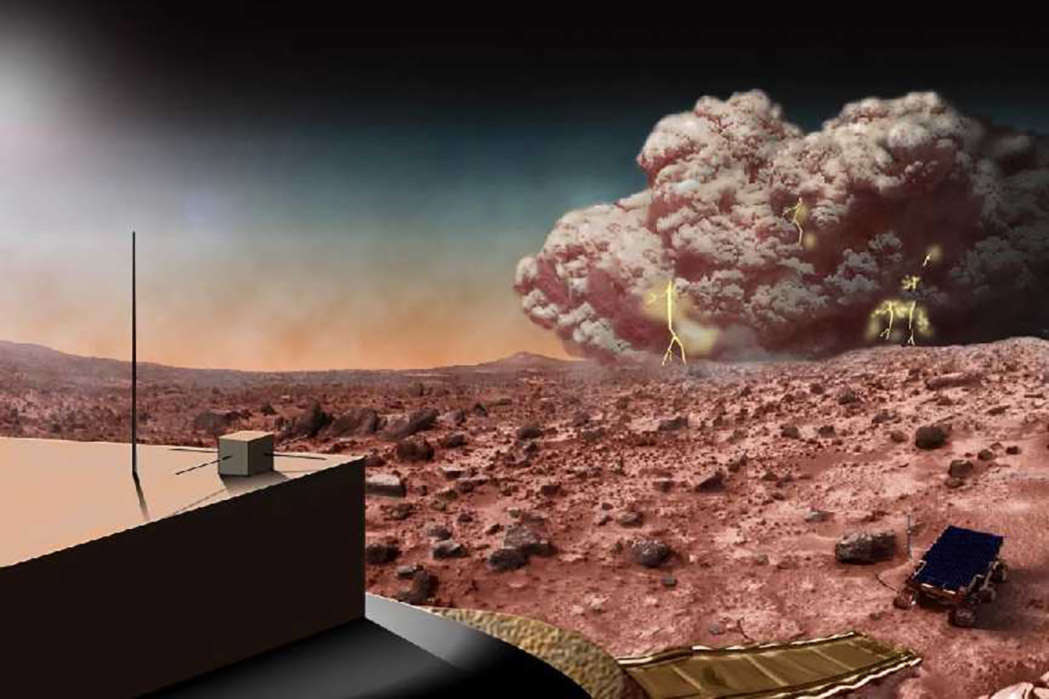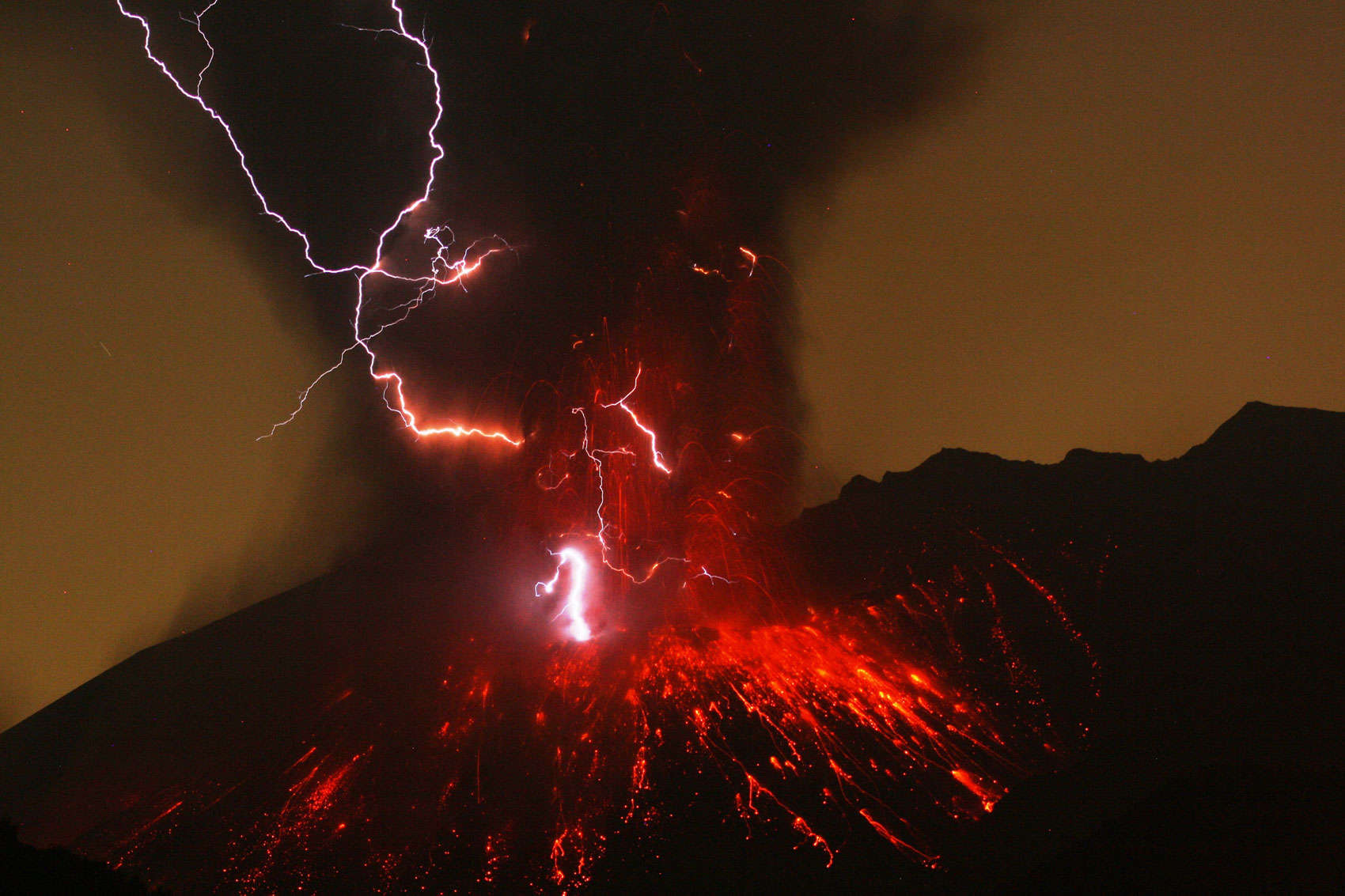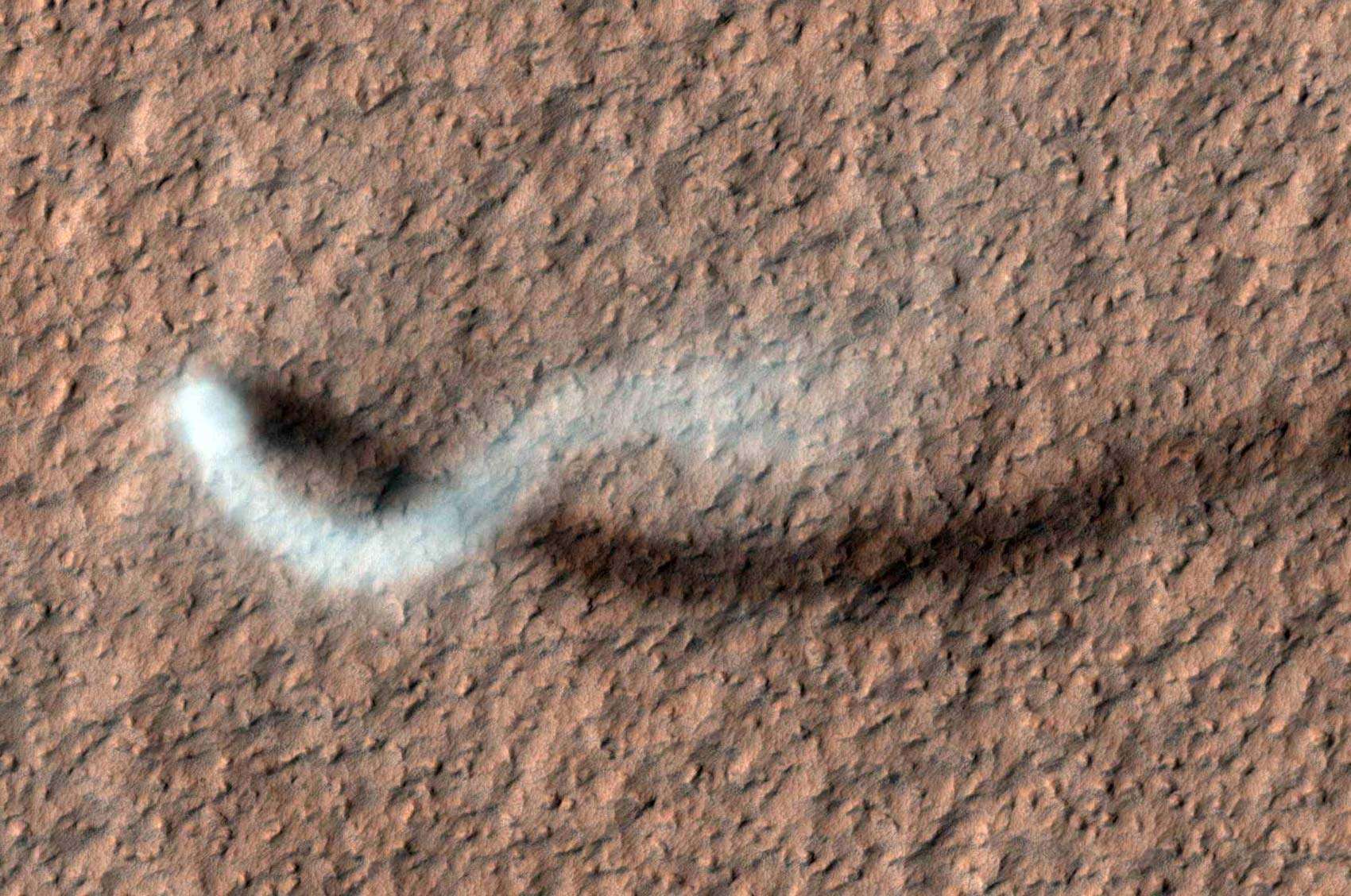Create a free profile to get unlimited access to exclusive videos, sweepstakes, and more!
Zzzzzt! Mars might be sparky

Does lightning strike on Mars?
Given that the atmosphere there is pretty dry, it doesn't get thunderstorms. So, large-scale lightning bolts are probably nonexistent.
Still, what about smaller scale electrical discharges? There's reason to think those might exist on Mars. For example, on Earth, volcanic eruptions can create decent-sized bolts as ash particles rub against each other (and quite violently) inside the plume. This generates a charge via the triboelectric effect, when molecules in one particle give up an electron or two to molecules in other particles (the same thing that happens when you rub a balloon against your hair to build up a static charge which you can use to stick the balloon to a wall). The plume separates the charges, and when enough charge is built up this way, craaaaaack! There's a sudden sharp flow of electricity to restore balance. In other words, strokes of lightning.
These bolts, on the scale of tens of meters, are much smaller than lightning bolts from storms, which can be hundreds of meters long. Still, Mars is a grainy place (small particles made as rocks erode), and windy, too. Dust storms on the fourth planet can get quite large, and there are numerous (and quite sizable) dust devils, too; vortices similar to tornadoes that can loft particles from the surface. Could these create lightning similar to terrestrial volcanoes?
There is some evidence of static charge buildup on Mars; images taken by Sojourner, the first rover sent by NASA, showed dust building up on the metal wheels and other parts, but it unfortunately wasn't equipped to measure if this was due to static electricity or not. But it's an indication it might be, and such a mechanism might play a role on Mars.
Scientists have experimented in the lab for years trying to find out. Basically, they take simulated Martian grains (using basalt particles, a volcanic mineral extremely common on Mars) and use flowing air to whirl them around in a chamber to see if they gather charge and then discharge it. However, there are issues that complicate things; for example, they use small chambers to contain grains, and the grains can hit the walls of the chamber which can affect the way the grains charge and discharge. Also, they don't always simulate Martian atmospheric conditions.
A new experiment aimed to get around that. They used volcanic grains from Earth to simulate Martian ones, and made a cylindrical glass chamber about 10 centimeters tall to contain them. They filled it with carbon dioxide — the air on Mars is nearly all CO2 — and reduced the pressure to that of Mars as well (in this case about 0.8% of Earth's at sea level). They then blew the air around such that the grains spun around the chamber and bumped into each other (this has the delightful description of entrained fluidized grain flow) while avoiding the glass walls, then used a device to measure the electric potential inside the chamber.
What they found is that within minutes the grains built up a decent static charge, which then discharged as sparks between grains (similar to the sparks you get when you rub your feet on a carpet and touch someone). The current flow was small, but they detected discharges every few seconds, with a greater charge building up over time.
This shows that yes indeed, grains of basalt near the Martian surface can build up a triboelectric charge. The charge is small, though, so it's not likely that you'd get huge bolts on Mars. Also, the air on Mars tends to break down (that is, allow current to flow) much more easily than Earth's air, so it takes a far smaller charge to get a spark. That means the huge charge needed for big bolts is unlikely to build up.
However, the experiment shows that smaller bolts, similar to what's seen in Earthly volcanoes, are at least possible. So dust devils and dust storms (which can get very large, like covering-the-entire-planet large) might be able to produce small bolts. There are other factors that are difficult to reproduce on Earth in the lab, so it's not clear if this happens or not.
The experiment also showed that grain collisions with the walls have an effect as well. The put an acrylic tube in the glass chamber and measured what happens when the grains charge up; they saw lots more positive discharges as opposed to the usual negative ones. Acrylic builds up a negative charge by taking electrons from the grains, so the positively charged grains tend to contact the walls, drawn by the opposite charge. This means that experiments that don't account for wall contact will likely get spurious results.
This all has impact on what we know about circumstances on Mars. Dust buildup on rovers is a problem, and will no doubt be a problem for astronauts who eventually travel there (the same thing happened on the Moon to the Apollo astronauts). The charge buildup on grains can affect how dust is lofted into the Martian atmosphere and how grains aggregate, and can even affect the chemistry that occurs on the planet's surface. Understanding how the charge builds and discharges is an important part of understanding Mars in general.
Also, I can imagine being a scientist on Mars getting samples out on the surface and seeing a dust storm approach. It would be scary enough — visibility can drop, and the dust will get into everything* — but to also see it approaching with ten-meter-long bolts of electricity sizzling through it? Yikes.
Just another fun way Mars is weird. And sparky.
*Unlike some depictions, dust storm winds can't blow things around; the air pressure on Mars is so low that even hurricane-speed winds would feel like a gentle breeze. However, particles in that wind would still be moving quickly and would give you quite the rash. Best to avoid them.




























